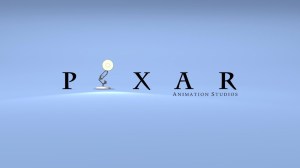Drawing is hard.
Videos by ComicBook.com
It doesn’t matter whether you prefers traditional art movements or new-age multi-media projects becasue when it comes to art, you must come to the paper with patience and plenty of practice. There are hundreds if not thousands of how-go guides out there that claims they’ll help you become the next Leonardo Di Vinci overnight. Those promises, despite being exaggerated, have lured in many aspiring artists who want to draw everything from still-life fruit baskets to Studio Ghibli manga. But, if it is manga you wish to master, then you can stop searching bookshelves for how-to guides.
Mark Crilley’s Mastering Manga 3 is just the thing you’ve been looking for.
Published in August 2016, Mastering Manga 3 is the third installment of Crilley’s how-to-draw series. The creator, who is known as a world-renowned artist, carefully crafted his new, intermediate level guide with ease in mind. While the book is geared towards manga artists who’ve already got their basics down, Crilley revisits fundamental lessons in Mastering Manga 3 while including additional challenges for more experienced artists. And, by the end, the how-to-guide will have you taught you how motivated artists can even create their own manga series.
From the outset, Crilley wants artists to know one thing, and it is that their art styles can be wildly different.
“Can one style be representative of all the various manga books being published today?” he asks readers. “Of course not.”
To prove this, Crilley includes multiple art styles and variations in Mastering Manga 3. If you have ever wanted to see the difference between realistic and elegant shojo art work, then you can find it in this book. Crilley tutors his readers about how these variations are created by explaining the methodology behind their differences. Rather than using a trace-after-me mindset, Crilley provides readers with text instructions and gradual character designs to get their own pencils sketching.
Crilley goes a step further with Mastering Manga 3 and even includes ‘Character Creation’ pages with the guide. These pages demonstrate how an artist can take their characters and experiment with their stylization.
“The difference between a good character and a great character is simply commitment,” Crilley stresses. “A great character is the end result of pages and pages of practice.”
Artists should expect to try these lessons on characters who are distinctly non-human. In Mastering Manga 3, Crilley gives fans how-to lessons on drawing pets, mechanized body armor, and even monsters. Again, the author gives readers multiple style variations for these characters to help his students decide which iteration suits their own stories. There’s even a chapter based on imaginary animals, so Pokemon fans better get their creative juices going when they block out their unique, adorable sidekicks.
While Crilley’s character design lessons are difficult, even beginners can tackle them if they practice diligently. A how-to guide about art is only as effective as the reader will let it; The author can only provide students lessons and hope they study the material earnestly. Crilley gives his readers every opportunity to practice their character sketches at their own pace – and then he gives them their final.
The end of Mastering Manga 3 is dedicated to professional touches and publication concerns. Rather than focusing on character creation, Crilley asks artists to think about costuming, consistency, and packaging. These final lessons are surface-level, but they do make aspiring artists think about how they should panel spreads, decorate background scenery, and even ink their stories.
When Crilley starts talking coloring, artists are finally challenged to think about their manga’s end-game. The thought is a startling one, but it is something which all artists will eventually face. Crilley simply tosses it to them with a gentle, preemptive nudge.

If there is any fault line in Mastering Manga 3, it would be with sequentiality. Crilley gives readers plenty of static panels, but I found myself wanting more examples of connected panels. I admit I am a novice when it comes to drawing of any sort, but I was unsure how I could take one of my panels work in tandem. Of course, this roadblock was situated towards the end of the guide, so it’s possible that Crilley will address it in his next how-to piece.
Overall, Mastering Manga 3 proves to be one of the better how-to-draw guides available today for manga enthusiasts. Crilley cheers his readers on as they complete each lesson, and persistent artists stand to gain much from the book if they let themselves learn.
Rating: 4/5 Stars
Read More on Mark Crilley: Review of Mastering Manga 3 \ Next Generation of Artists \ American Crossovers









